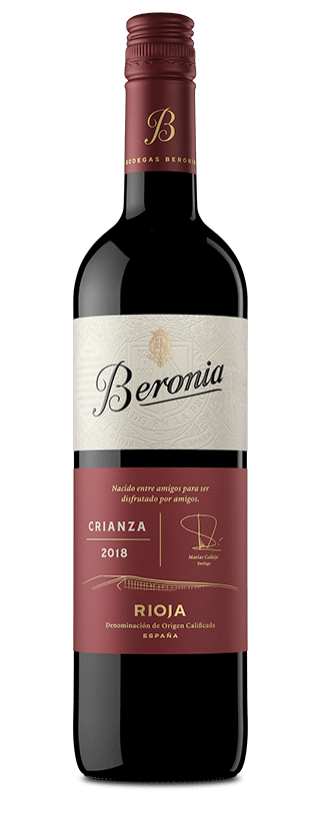1
/
of
1
Beronia Crianza - 2018 (750ml)
Beronia Crianza - 2018 (750ml)
Regular price
$18.99
Sale price
$18.99
Regular price
$29.99
Unit price
/
per
Share :

- varietal
- Region
- Sub - Region
- Type
- Reviews
Product Review
A structured crianza with cherry, light cedar and berry aromas and flavors. It’s medium-bodied with slightly chewy tannins and a nicely flavored finish. Vegan. Drink now or hold.
Product Score
92
Coined by Jancis Robinson as "Spain’s answer to Cabernet Sauvignon," its style varies significantly depending on terroir and the wine-making techniques used. Cooler regions and stainless steel fermentation tend to produce Tempranillos with fresh strawberry and cherry like fruit, similar in body to Pinot Noir. Examples from hotter, more arid regions that undergo extended oak aging often produce richer, plumper, jammier wines, typically exhibiting chocolate, tobacco, and leather notes. Tempranillo provides the backbone of the highly regarded wines of Rioja, Toro and Ribera del Duero. In Rioja particularly, it is typically blended with Garnacha (Grenache), Mazuelo (Carignan) and Graciano. In La Mancha and Navarra, it is commonly blended with Cabernet Sauvignon and Merlot to produce inexpensive, great-value wines. One of the few places Tempranillo has spread to is Spain’s neighbour, Portugal. Grown mainly in the Douro valley since the mid 19th century, where they call it Tinta Roriz, it is used as one of the key blending agents in port. Lately it has been used in the region's intensely rich, dry, table wines.
Rioja Alavesa is the smallest of the three wine-producing sub-regions in Rioja, Spain. It is situated to the north of the River Ebro, straddling the La Rioja region and the Alava province within the autonomous community of the Pais Vasco (Basque Country). Tempranillo is the main grape variety here, as in all parts of the Rioja, and Garnacha, Mazuelo and Graciano are used as blending partners. These wines are often prized for their aging potential. A very small quantity of white wine is also produced in Rioja Alavesa, from Viura (Macabeo) grapes.
Red wine is wine made from dark-coloured grape varieties. The color of red differs based on the grapes variety or varieties used.Interestingly, black grapes yield a juice that is greenish-white. The actual red color comes from anthocyan pigments (also called anthocyanins) from the skin of the grape (exceptions are the relatively uncommon teinturier varieties, which produce a red colored juice). Most of the production centers around the extraction of color and flavor from the grape skin.


